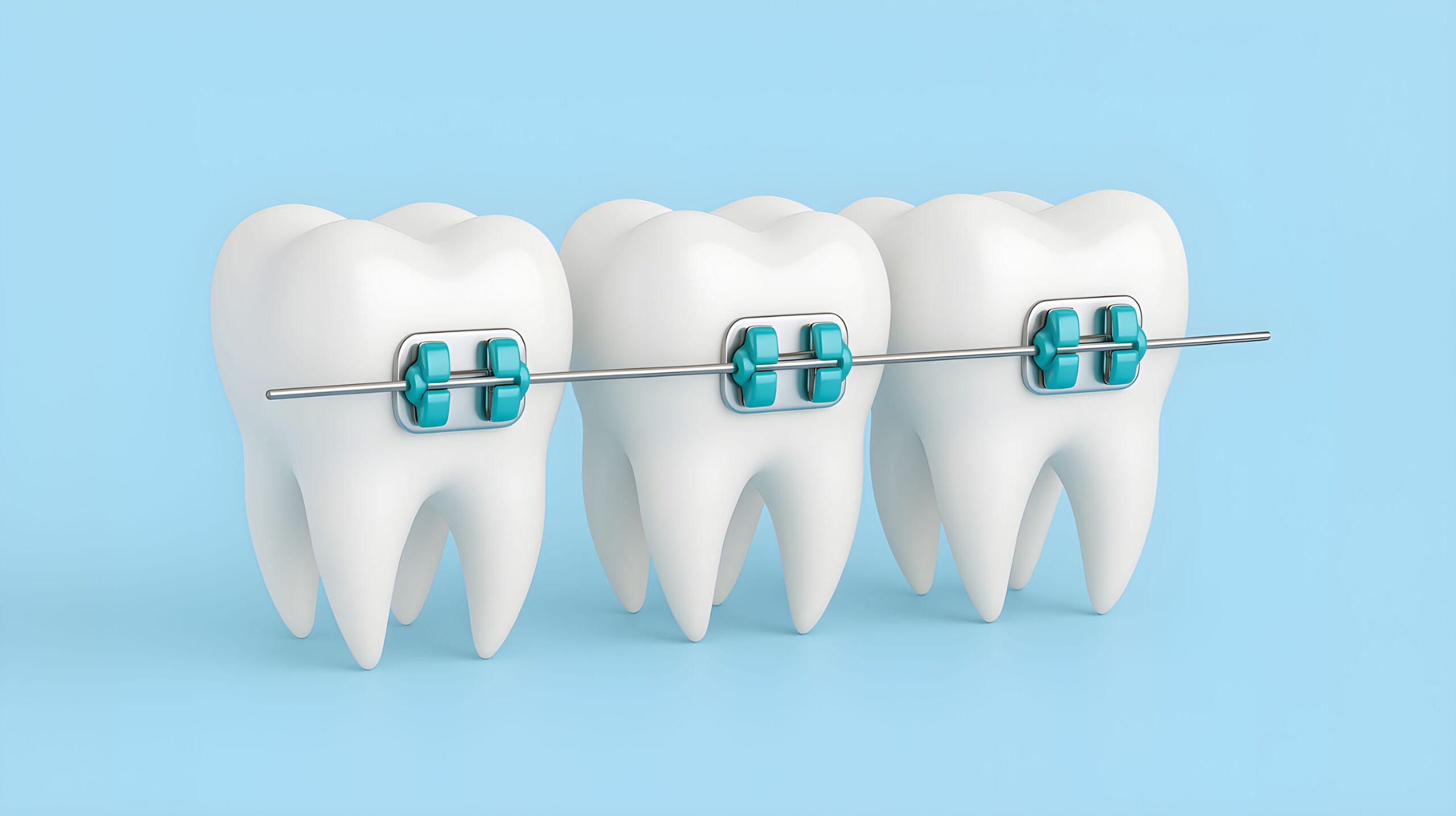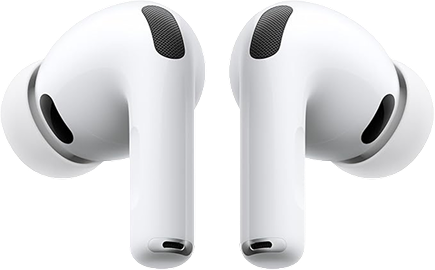What if you could easily realign and correct any flaws in your smile? What if you could do this without having the dreaded ‘metal mouth’ that most of us remember and are used to seeing?
That is the beauty of clear aligners, also known as ‘invisible braces’. The modern and inconspicuous way to treat mild to moderate orthodontic issues is a clear alternative to traditional braces that have revolutionized orthodontic care. A beautiful smile makes a huge impression. Imagine how much confidence and positivity common people could exude with a perfect smile!
This complete guide will help you decide if they are right for you if you are looking to perfect your smile. We will cover topics ranging from:
- How they work
- What are the Advantages vs. Disadvantages
- Treatment duration
- What to expect during your treatment
- Different types of clear aligners
- Aftercare
Our aim is to supply you with all the information you need to make an informed decision and achieve those smile goals.
What Are Clear Aligners?
Clear aligners are thin but sturdy custom-fit plastic trays that fit snugly over your teeth, one for your uppers and one for your lowers. They are constructed of smooth, next-generation medical-grade plastics that are crystal clear rendering them virtually invisible to see. In theory, nobody has to know that you are realigning your teeth but you!
One of the most popular reasons for clients choosing clear aligners in addition to their discreet appearance is that they are fully removable. You certainly can’t do that with traditional braces. What this means for a client having treatment is that they can enjoy all of the usual foods they like and maintain their normal hygiene routine.
How Clear Aligners Work
Clear aligners work by gently applying pressure in a sequence designed by your orthodontist to move your teeth. It’s a gradual process as all of your teeth are involved in the realignment process to create the healthiest bite possible.
There are several steps in the process of treatment with clear aligners:
- Treatment always begins with a complete dental check that may involve 3D scans, taking teeth impressions, X-rays, and assessment of your underlying bone structure.
- Next, your orthodontist will develop a personalized treatment plan tailored specifically for you that details the sequence of gradual guided movement. Furthermore, a digital preview of your corrected smile is created before treatment, helping you visualize the results.
- Once you are fully satisfied with the preview, the digital design is sent to the lab to create your customized aligner trays.
- Once the aligner trays are manufactured, you will be seen back at the office for the orthodontist to deliver them to you. This is the time where attachments will be placed on your teeth and you will be given specific instructions on how to wear the aligners.
- You will be seen every 2-4 months to check the progress of the treatment and given more aligners. Adjunct procedures such as interproximal disking or wearing elastic bands may also be necessary to facilitate the movement of the teeth.
- Once you are finished with a set of aligners, your orthodontist will review the result and decide if more aligners are needed. If so, a new scan and records will be taken to order more trays to continue the movement of teeth. This process will repeat until the desired result is achieved. On average, you can expect to need to wear 2-3 sets of aligners for your orthodontic treatment.
- Bear in mind that daily wear time is usually 20 – 22 hours, so removing them too often and underwearing your aligners will only result in a much slower progress
Advantages & Disadvantages Of Clear Aligners
As with every type of treatment, some advantages and disadvantages come with choosing clear aligners with which you should be familiar. Let’s take a look at those now that you know how clear aligners work.
Advantages:
There are several reasons why more and more clients are choosing to use clear aligners in lieu of traditional metal braces with brackets and wires. These include:
Aesthetics
While the allure of a perfect smile is a huge confidence booster, many fear that going through traditional braces treatment will only make them more self-conscious. This issue becomes a non-issue when you choose clear aligners. Their virtually invisible appearance is ideal for adults and teens alike, minimizing the anxiety of having treatment.
Comfort
Without any bulky metal components attached to your teeth that often irritate gums, clear aligners provide a much more comfortable alternative. Smooth plastic that snugly wraps your teeth in a custom fit virtually eliminates the possibility of discomfort.
Better Oral Hygiene
The removable nature of clear aligners makes it much easier to maintain your oral hygiene routine. Brushing and flossing are just like normal, unlike traditional braces, which can make flossing a hassle.
Treatment Time and Flexibility
In some cases, clear aligners can reduce treatment time compared to traditional braces. They are precise while providing the flexibility to remove them for special occasions and enjoy your usual food choices—something that’s not possible with traditional braces.
Disadvantages:
While clear aligners offer many advantages, there are certain complex orthodontic cases where they may not suffice on their own. In such instances, traditional braces provide additional features that the orthodontist can utilize to achieve optimal results.
- Clear aligners may not be as effective for severe malocclusions, significant tooth rotations, or large gaps. In these situations, traditional braces can provide greater precision.
- Clear aligners give patients the temptation of taking them off and not wearing it consistently; while braces cannot be taken off by the patient. The success of clear aligner treatment largely depends on the patient’s commitment to wearing them for the recommended minimum hours each day. Neglecting to do so can prolong treatment and affect the final results, so it’s essential to be prepared to make this commitment.
- If patients eat or drink with aligners in place, food particles and liquid can seep in getting trapped. This is not ideal for your oral health and can lead to gum disease, decay, and even bad breath.
How Long Do Clear Aligners Take To Work?
The length of time that it takes for your clear aligners to work and give you a final result is highly dependent on several factors. These include:
Expected Treatment Time – Your orthodontist should give you an expected guideline as to when your treatment should be complete based on a number of factors. This will include how complex your particular case is, and remember that no two cases are the same. Your individual case will have its own nuances affecting your end date. It could be anything from six months to two years, so commitment is key.
Factors Affecting Treatment Time – A huge part of this is not only the severity of your case, but you too will affect the amount of time it takes to achieve your result. Non-compliance with the minimum hourly wear per day makes a big impact. In addition, not every person’s biological response is the same. More mature patients may take longer to realign as the progression continues, but your orthodontist can help manage your expectations on regular reviews of your progress.
What To Expect During Treatment
If you are wondering what daily life is like with clear aligners, and some common pitfalls with occasional discomfort might be, we break it down for you here.
Daily Life Wearing Clear Aligners
Wearing aligners for 20 to 22 hours daily, addressing any discomfort, and following key care tips.
We cannot emphasize enough the importance of tracking the time your aligners are removed each day. Everyone needs to eat, so if you leave your aligners out for too long one day, you cannot compensate for that by wearing them longer the next day.
When your aligners are not in place, always store them in their protective case to prevent any unwanted damage.
Common Side Effects
Discomfort
There can be mild discomfort, particularly when you change aligners and new gentle pressure points are the focus. You can manage this by giving yourself time to adjust and know that this usually subsides in a few days. If it persists or you experience gum irritation because of an imperfect fit, contact your orthodontist. Clear aligners should not be a negative experience.
Oral Health Risks
If not managed properly, clear aligners can lead to complications like gum issues and tooth decay. It’s crucial to maintain a diligent oral hygiene routine and monitor wear time to ensure optimal results and prevent any adverse effects.
Psychological Impact
The possibility of complications can lead to stress and anxiety. Gaining a comprehensive understanding of clear aligners will better prepare you for the journey ahead. It’s not solely about aesthetics or convenience; it’s also essential to be aware of the potential risks and complications associated with this treatment option.
Different Types Of “Invisible Braces”
In addition to clear aligners, there are also other types of ‘invisible’ or ‘minimally visible’ braces for comparison.
Here is a breakdown of the various types of less obvious types of braces.
Ceramic Braces – These are the same as traditional metal braces, but the brackets are ceramic and usually matched to your tooth colour rendering them less obvious. They come with exactly the same issues as traditional metal braces in terms of difficulty in maintaining excellent oral hygiene, limited food choices, and discomfort.
Lingual Braces – Lingual braces are generally a more costly option and involve placing the braces behind the teeth so they are not visible. There can be discomfort for your tongue with the metal surfaces, and it can impact speech to a degree. They are however a good option for more complex cases that clear aligners are less able to treat. Note that they are also much harder to clean and maintain your usual oral hygiene.
Aftercare Tips For Effective Clear Aligner Treatment
Once you’ve determined that clear aligners are the right choice for you and you have actually completed a treatment plan, you’ll need to follow some aftercare tips to ensure that your results are maintained.
Wear Your Retainers
Your orthodontist will provide you with retainers to help secure your results in place. After all of the realigning and movement, your underlying bone structure needs time to rebuild to full strength. Consistent wear and wearing as instructed is instrumental in maintaining your hard-earned results.
Good Retainer Hygiene
Your retainers need an equal amount of good hygiene just like your aligners did. They should be rinsed before and after use, and deep cleaned using toothpaste and a brush. Effervescent denture tabs (tablet looking cleaners) are a popular option that ensures there are no abrasives or friction to alter the shape of the retainer. When not in use, always keep your retainer in a protective case to keep it clean and out of direct heat and light sources.
Excellent Oral Hygiene
By now you should be an expert on oral hygiene and keeping a travel toothbrush and paste with you at all times! Use floss daily and incorporate an antibacterial mouthwash for added protection.
Conclusion
After reading the A-Z guide on clear aligners, you should have an informed idea if these are right for you.
A truly clear difference in orthodontic treatment, clear aligners offer you virtual invisibility for modern smile realignment. Removability, comfort, flexibility and zero restrictions on your food choices make them a winning choice.
You could be making your best first impression with a winning smile in no time if you put in the time.
If you’re ready to take the next step and achieve your dream smile, get in touch with one of our orthodontists today.
Book your consultation, get your smile design, and treatment program estimate and don’t delay achieving what you deserve.

Hello! I’m Dr. Kevin Lee, a certified orthodontic specialist at PacificWest Dental Group, proudly serving the vibrant communities of Vancouver and Surrey. My journey into orthodontics began back in high school. As a teenager wearing braces, I became fascinated by the intricate blend of art, engineering, and biology that defines this field. This early experience ignited a passion that has guided me throughout my career.
I pursued my academic journey at the University of British Columbia (UBC), where I earned a Bachelor of Science in Biochemistry in 2006, followed by a Doctor of Dental Medicine in 2011. After a year-long residency at Montefiore Medical Center in New York, I returned to UBC to complete a combined Master of Science in Craniofacial Biology and a Diploma in Orthodontics in 2015. That same year, I achieved certification from both the Royal College of Dentists of Canada and the American Board of Orthodontics.
With over a decade of clinical experience, I remain deeply committed to staying at the forefront of orthodontic advancements. At PacificWest Dental Group, we prioritize personalized treatment plans tailored to each patient’s unique needs, ensuring comfort and care every step of the way. Our goal is to help you achieve the smile you’ve always dreamed of in a welcoming and supportive environment.
Outside the clinic, I enjoy engaging with our community and staying active. Whether it’s through local events or outdoor activities, I believe in building strong relationships both inside and outside the office. I look forward to meeting you and working together to create a beautiful, confident smile.
Services we provide:
-Invisalign
-Braces
-Lingual Braces
-Digital treatment planning
-TMJ and headpain treatment
-Laser Therapy
-Sleep Apnea Oral Appliance
-Dysport Cosmetic Injectables










